In the Vortex of Toxic Woo-Woo
Make It Stop is coming to San Diego on 4/11
Greetings from Flagstaff, Arizona!
In the matter of a few days I went from the desert shores of the Salton Sea to snow in the mountains of Flagstaff to the red rocks of Sedona. We have a lot of ground to cover this morning so let’s get started…
On Saturday I took part in the first Bombay Beach Lit Fest. Since the festival partially overlapped with Nuvia’s spring break, we decided to make a road trip out of it.
Bombay Beach is a desert community on the eastern shore of the Salton Sea. Technically, the Salton Sea is a saline lake that over the course of centuries filled and dried up again according to the whims of the Colorado River. The present iteration of the lake was formed in the early part of the 20th century by irrigation canals and fed by runoff from farming communities. In the 1950s developers tried to turn it into a resort destination but the water was so salty and toxic that it was harmful to the wildlife that called it home and the Salton Sea became synonymous with fish kills and foul odors. When the lake began to dry up in 1999 toxic dust blew into nearby communities.
The Salton Sea is a bit of a conundrum. The state can’t allow the lake to dry up for the harm it will cause, but the water is so toxic that it can’t be used for commercial or recreational purposes. It’s an environmental boondoggle that isn’t going away anytime soon.
In 2015 a group of artists formed the Bombay Beach Biennale a “renegade celebration of art, music, and philosophy.” The festival is a three-month collaboration between artists from all over the world and the local community that lives in Bombay Beach year-round. The artists transform abandoned homes and decrepit trailers into art installations and happenings on a site the rest of California has deemed anywhere from undesirable to outfight inhospitable.
The Bombay Beach Lit Fest was created by the writers Gina Frangello and Rob Roberge as a no-ticket, no-sponsor literary offshoot of the biennale but the pandemic scuttled those plans, making 2023 the inaugural event.
I’d never been to the Salton Sea before and was shocked by how big and beautiful it looked—from a distance. It’s rare to see natural beauty in California that isn’t marred by development and the landscape looks the way it did hundreds of years ago: a large shallow lake ringed by rugged mountains.
Bombay Beach is one of the few communities on the Salton Sea where residents live all year long. Driving in it looks like any other small high desert town whose existence feels like an affront to the harsh climate. The closer one gets to the beach, the stranger it gets with remnants of art brut installations and exhibitions withering in the heat.
Bombay Beach has a bar and a restaurant that keeps regular hours, an American Legion Post, and a host of volunteer-run, community-driven establishments like a library that occupies a converted garage called the Church of Being. This was where we were headed.
We were only in town for a few minutes when we bumped into some friends from San Diego: the writer Tammy Greenwood, whom I’ve known since we were in grad school together at NAU, and her husband Patrick Stewart who helped organize the festival. Shortly afterwards we bumped into reformed scumbags Patrick O’Neil and Rob Roberge and we proceeded to the library for our event.
Patrick and Rob are writers and friends I could count on running into at literary events in and around LA. Then the pandemic hit and those events went away. The three of us are all in recovery and have gone long stretches where, to put it mildly, we were not kind to our bodies. So to sit together in a room full of people to talk about punk rock felt like a minor miracle. We’re alive!
After the event I got to meet Craig Clevenger who has a new novel coming out from Datura Books called Mother Howl that looks fantastic and Mark Hornish, whom I met through Message from the Underworld. (Hi Mark!) Mark told me an incredible story of how he saw Dez Cadena-era Black Flag in Dover, New Jersey, and afterwards the band stayed at his house and Greg Ginn taught him how to tune his guitar.
After the event, the Salton Sea called to us and we walked to the beach with Patrick to catch up and take in all the strangeness. We saw all kinds of arresting installations. A fake real estate office. An SOS sign planted on the shore. A strange metal pyramid rusting on the beach. I loved the anarchic spirit of the place but I’m not sure how I feel about artists parachuting into a place they don’t live and leaving their art behind. Are they enhancing a place the rest of the world has abandoned or contributing to the blight? Is Bombay Beach the last refuge for those who want to create a space for themselves in California that’s not off the grid but not entirely on it either? Or is it a foretaste of what the entire planet is going to look like as we slide into a serious of environmental catastrophes?
All I can say for sure is that the residents we met care about their community and the people who live there and were exceptionally welcoming and hospitable.
The next day we were off to Arizona. After recharging in Needles, home of Snoopy’s brother Spike, we drove into Northern Arizona and arrived in Flagstaff as the sun was going down.
Flagstaff occupies a weird place in my imagination these days. I lived in Flagstaff for three years from 1993-1996: two years as a graduate student and one year as a full-time instructor. I didn’t have a car for most of that time and stayed very close to campus. I’ve visited Flagstaff a handful of times over the years, but most of the time I was passing through, which is how most people experience the town, which is located on old Route 66. It’s not a college town. It’s a place that people visit on the way east or west or when they come to see the Grand Canyon.
As readers of Message from the Underworld know I’ve spent the last seven months writing a novel that’s set in Flagstaff circa 1993. I’ve been living in Flagstaff in my head and it’s been jarring to come to terms with the fact that this imaginary version of Flagstaff no longer exists. It’s been 30 years since I showed up at NAU, eager to make something of myself. Things are either gone or not where I remember them being. Things are farther apart than I recall. The landscape has been transformed by hotels, box stores, and chain restaurants. The sleepy little town is more corporate, less charming. The way all things are.
But some things are exactly the same: the ever changing weather, the remnants of dirty snow, sidewalks dusted with volcanic cinders, the trains that rumble through town, and the monolithic presence of the San Francisco Peaks.
I’ve returned to Flagstaff more curious about the place than I was when I lived here, eager to know the names of trees and when buildings were constructed or torn down. My thirst for new/old experiences that mimic the characters in my novel, which to varying agrees mirror my own, extends to outlying communities like Mountainaire Kachina Village and, farther south, Sedona.
Sedona is a place that’s famous for its natural beauty and has a peculiar pull on two kinds of people: the extremely wealthy and practitioners of alternative new age healing practices. When I arrived in Flagstaff in 1993, these attributes made Sedona a kind of a joke that was eminently deserving of our Gen X scorn. For decades I’ve mocked the woo-woo economy that thrives here: from vortex tours to chakra alignments. The last time Nuvia and I passed through we laughed at an ad for aura photography. Photograph your aura? What does that mean? How is that possible?
Well, yesterday we found out.
The woman who took our photograph and interpreted our auras was such a character I think it will take another episode of Message from the Underworld to describe the experience. In any case, I’m still processing.
Have you ever had your aura photographed? Is that something you would consider doing? If so I’d love to hear from you.
Make It Stop in San Diego
Tuesday April 11 marks the beginning of the Make It Stop celebration. The event will be held at The Book Catapult at 7pm with Patrick Coleman. Even though the novel doesn’t officially come out until April 25, the bookstore has copies of the novel in stock.
If you pre-ordered Make It Stop, you may have already received your copy in the mail. If so, feel free to bring it so I can sign it for you. If you haven’t pre-ordered, you can still do so.
Make It Stop in the news
Make It Stop was named to Vol. 1 Brooklyn’s April Edition of Books of the Month. Here’s what they had to say:
Whether he’s recounting punk history or telling a harrowing tale of a haunted casino, Ruland’s work immerses you in a specific place and time. Make It Stop heads into speculative territory, with a near-future setting in which the costs of going to rehab or a detox center have taken on a surreal increase — and a secret society rises up to push back against it.
Message from the Underworld Reading Group
Do you want to be part of an experiment that doesn’t involve drugs, cults, or political donations? I’d like to experiment with deeper conversations about books here at Message from the Underworld using some of Substack’s features. I thought we’d start small by reading a short story and then getting together next week to talk about it.
Your assignment, if you choose to accept it, is to read the short story “Sensini” by Roberto Bolaño, which you can read here for free. Then, we’ll talk about it next week in a special thread that I’ll send out. If you think this is a good/bad idea or have thoughts on the matter let me know!
Thanks for reading! Stay safe and see you next week. Tomorrow our adventure continues as we head east to Gallup, New Mexico, and north to Two Grey Hills.

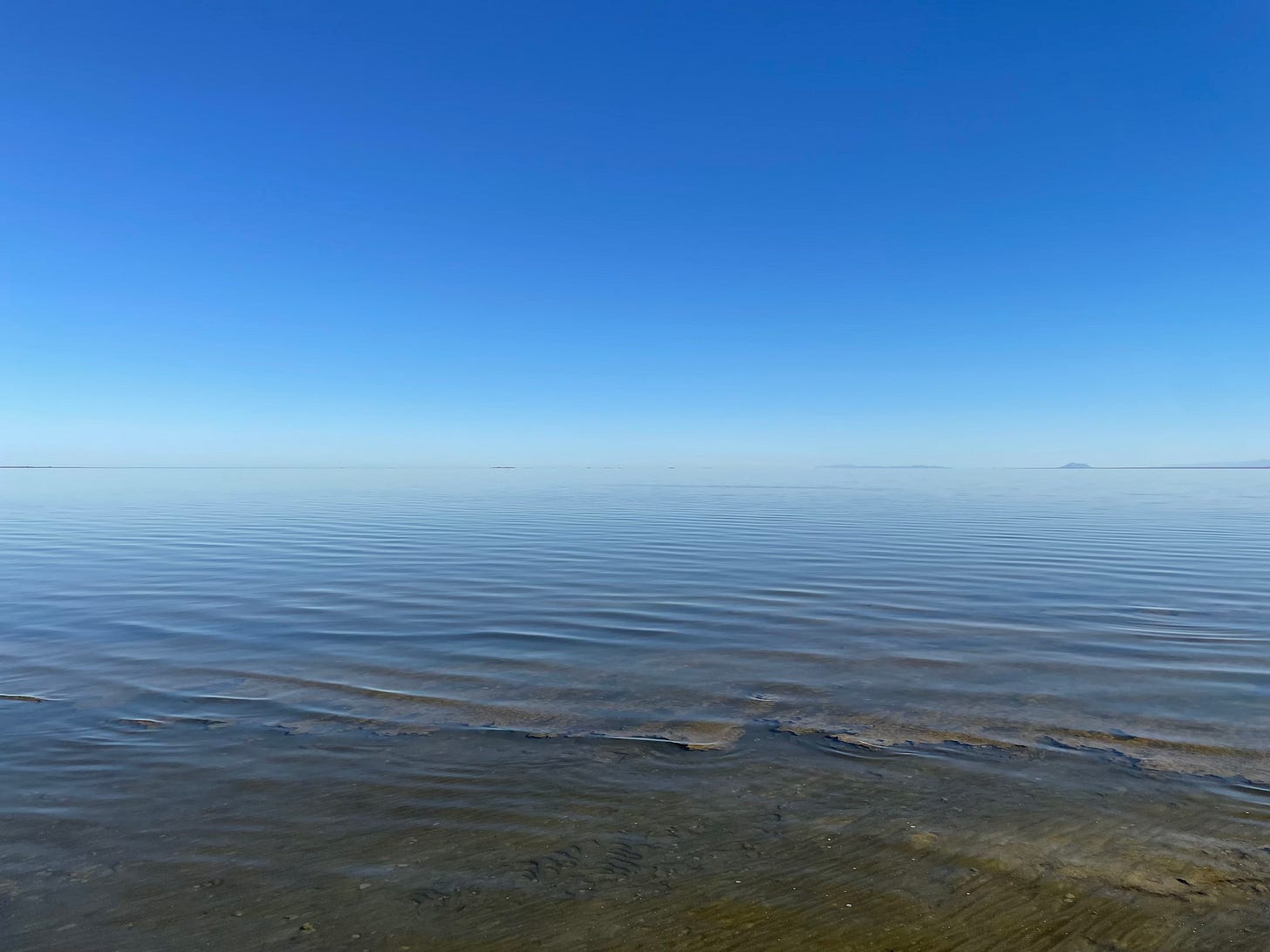
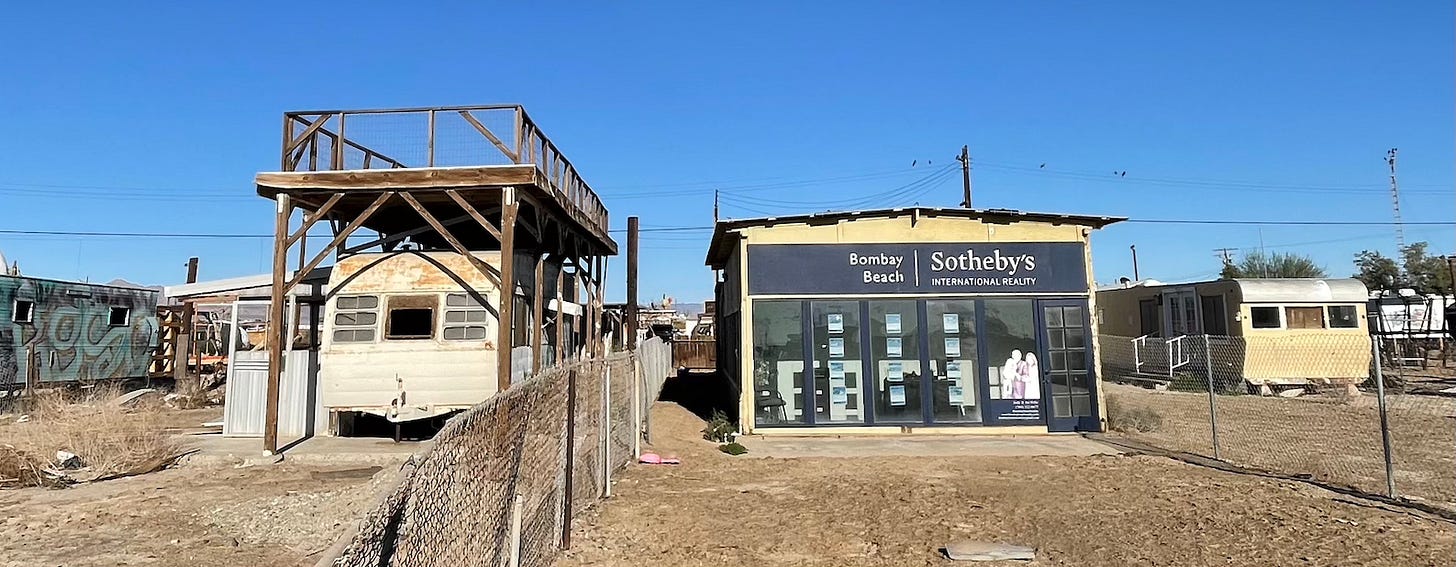
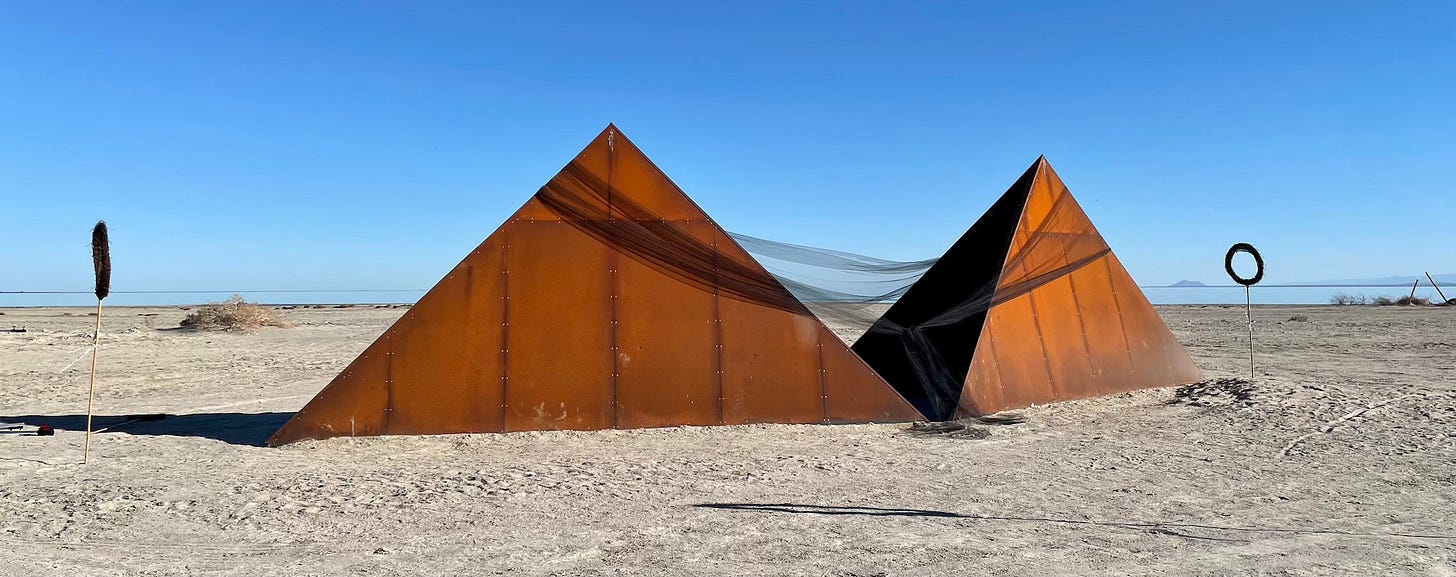
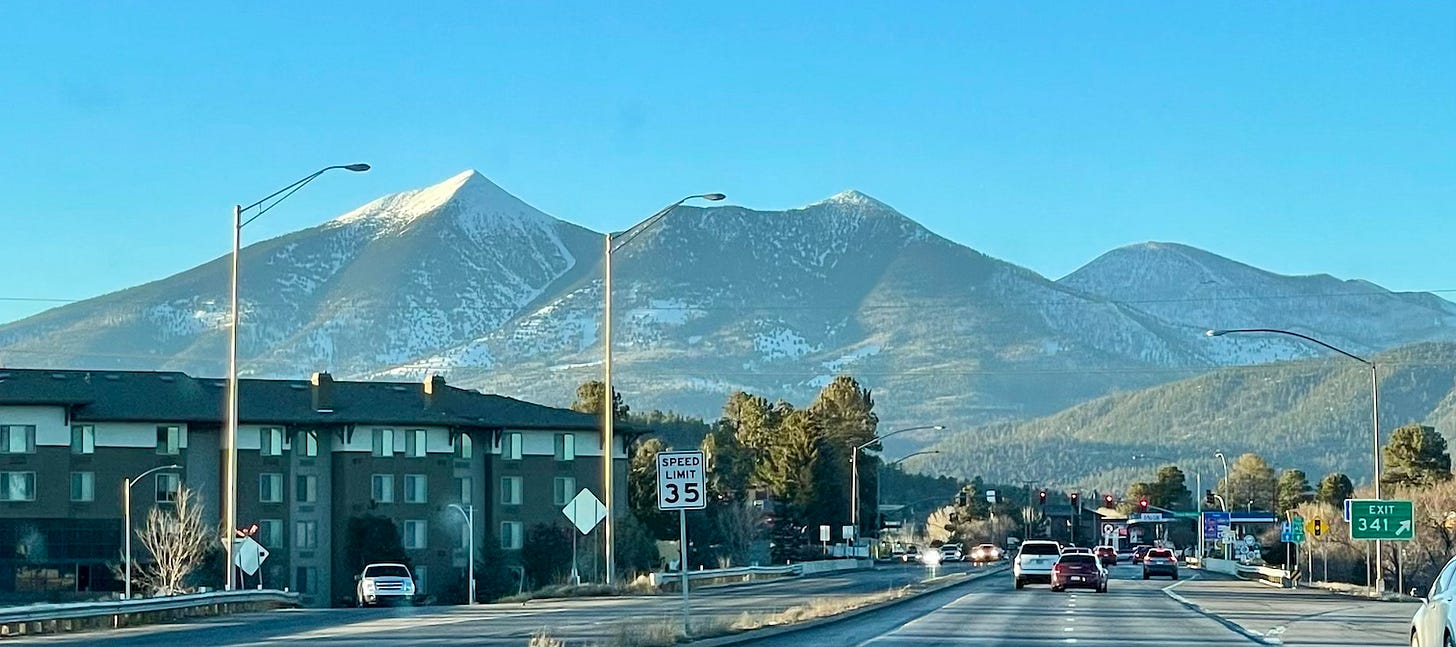
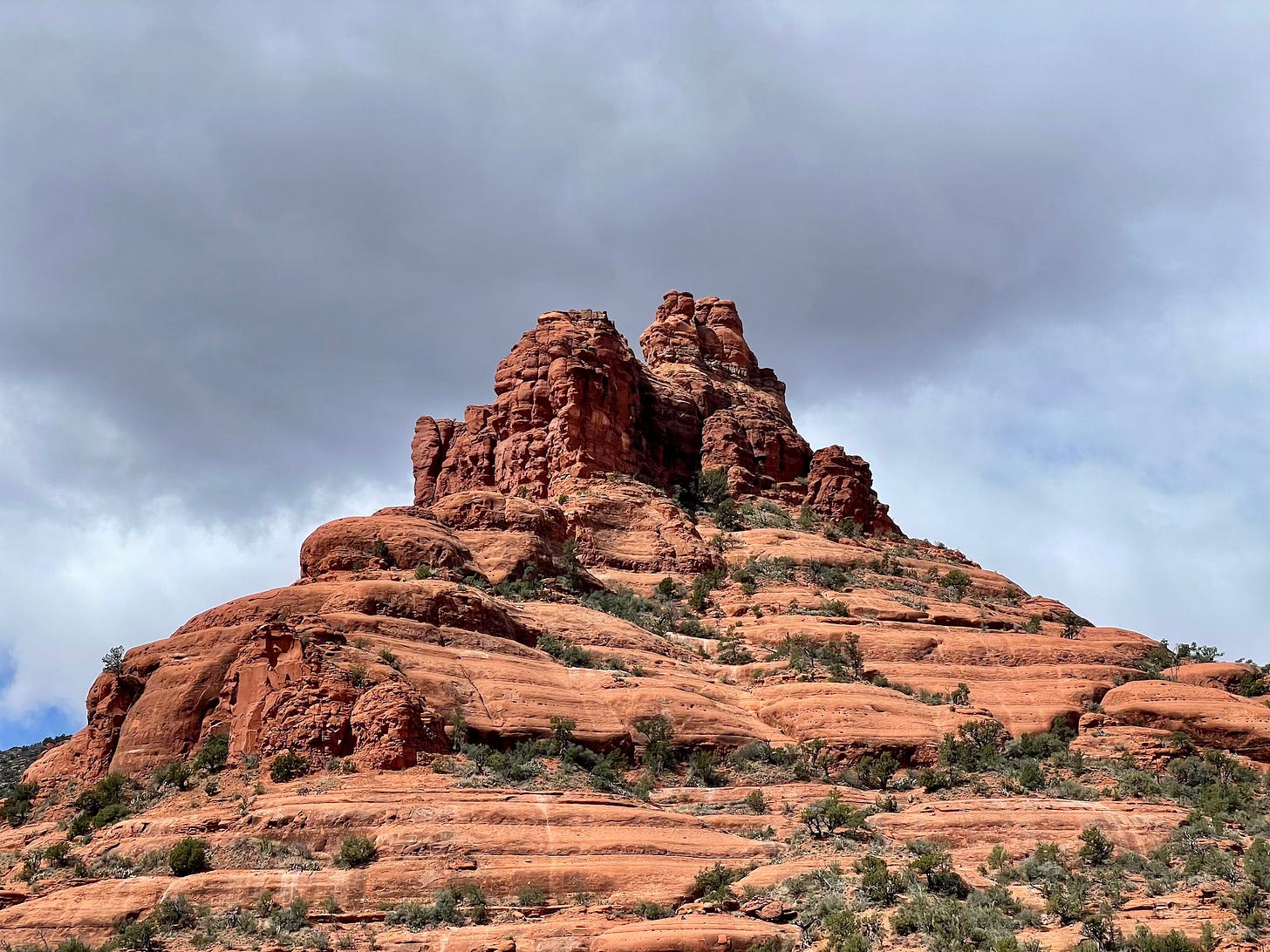
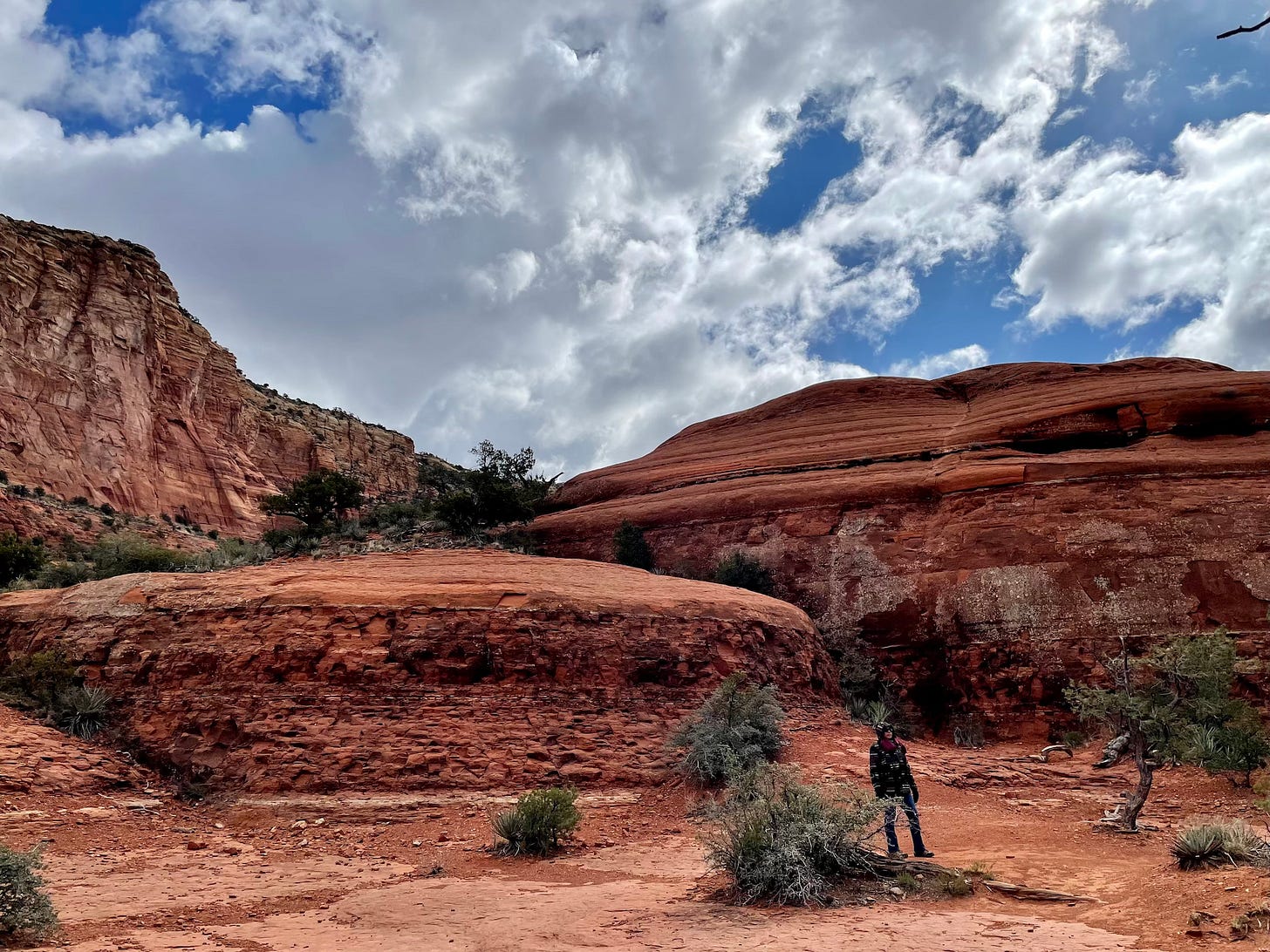
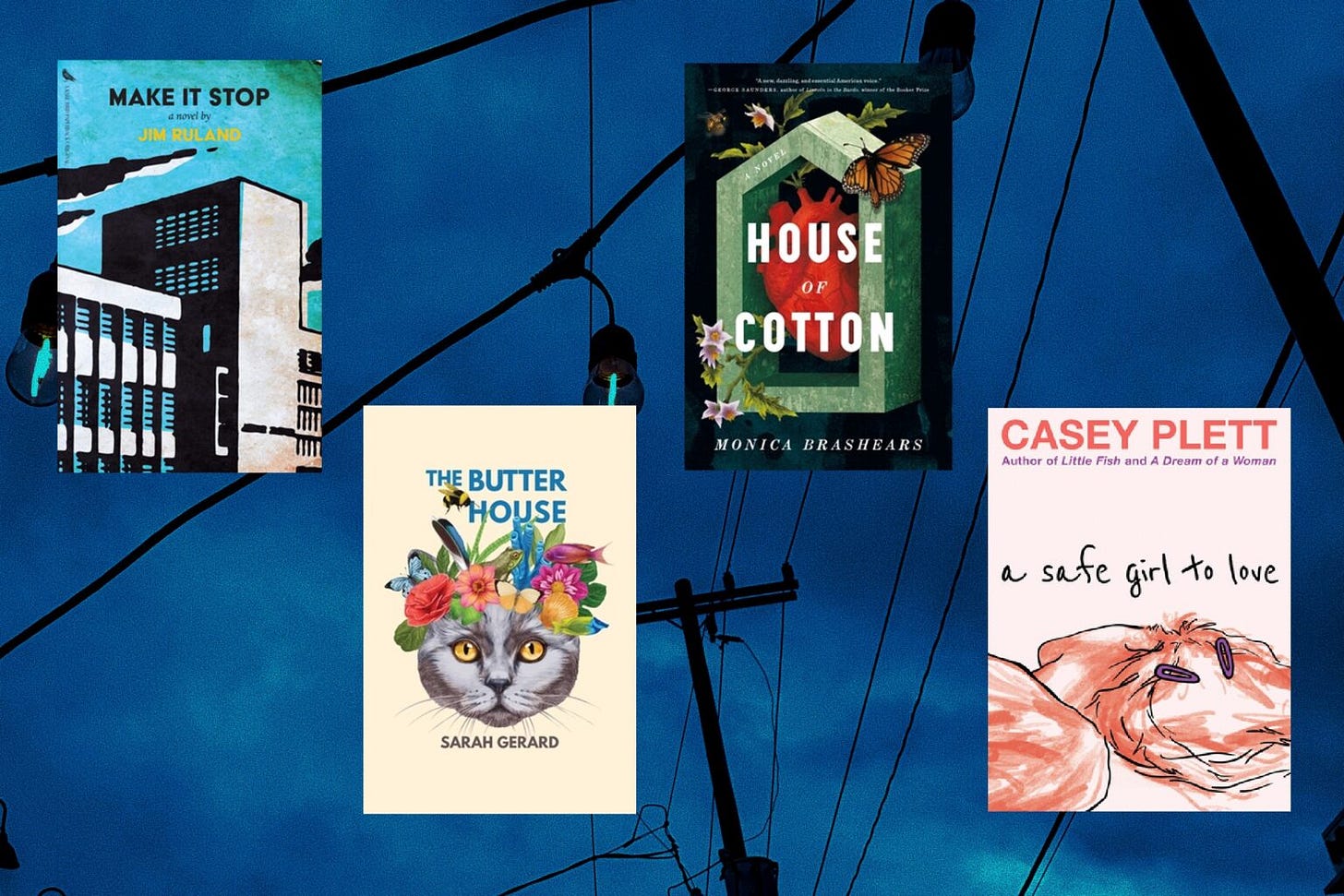

I like Flagstaff, but it's always felt out of step with what I imagine Arizona to be (ie hot & flat). It feels like it'd be much more at home in Utah, Colorado, or central Oregon.
With Sedona, there's certainly an energy there. but I was more moved by the physical beauty of the place than anything else. Maybe that's just me.
Aura Photography that sounds very interesting!